Paul von Hindenburg Worksheets
Do you want to save dozens of hours in time? Get your evenings and weekends back? Be able to teach about Paul von Hindenburg to your students?
Our worksheet bundle includes a fact file and printable worksheets and student activities. Perfect for both the classroom and homeschooling!
Resource Examples
Click any of the example images below to view a larger version.
Fact File
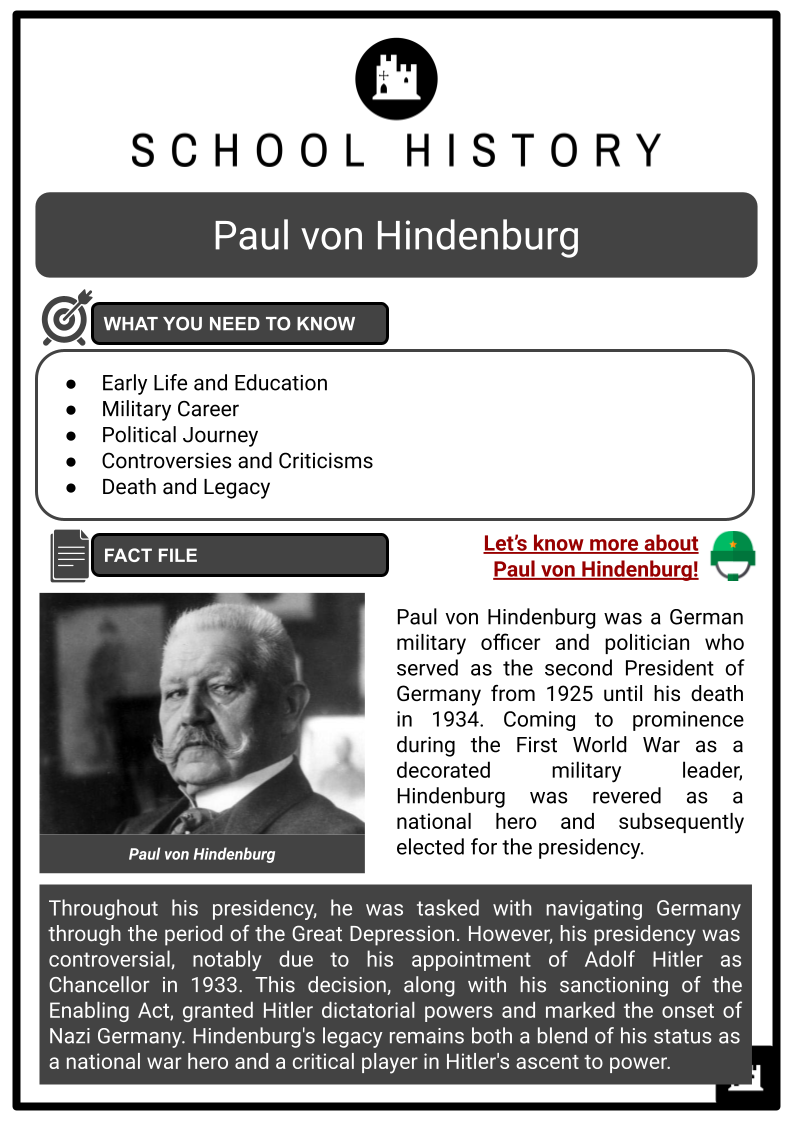
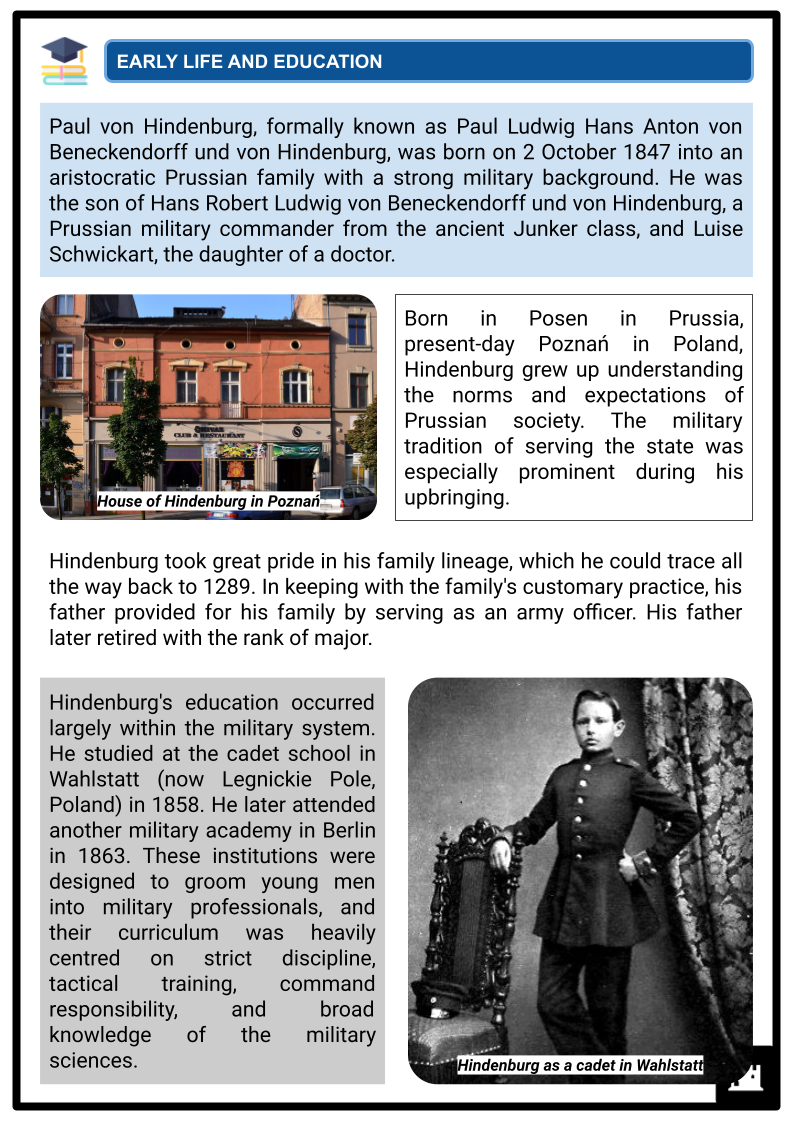
Student Activities
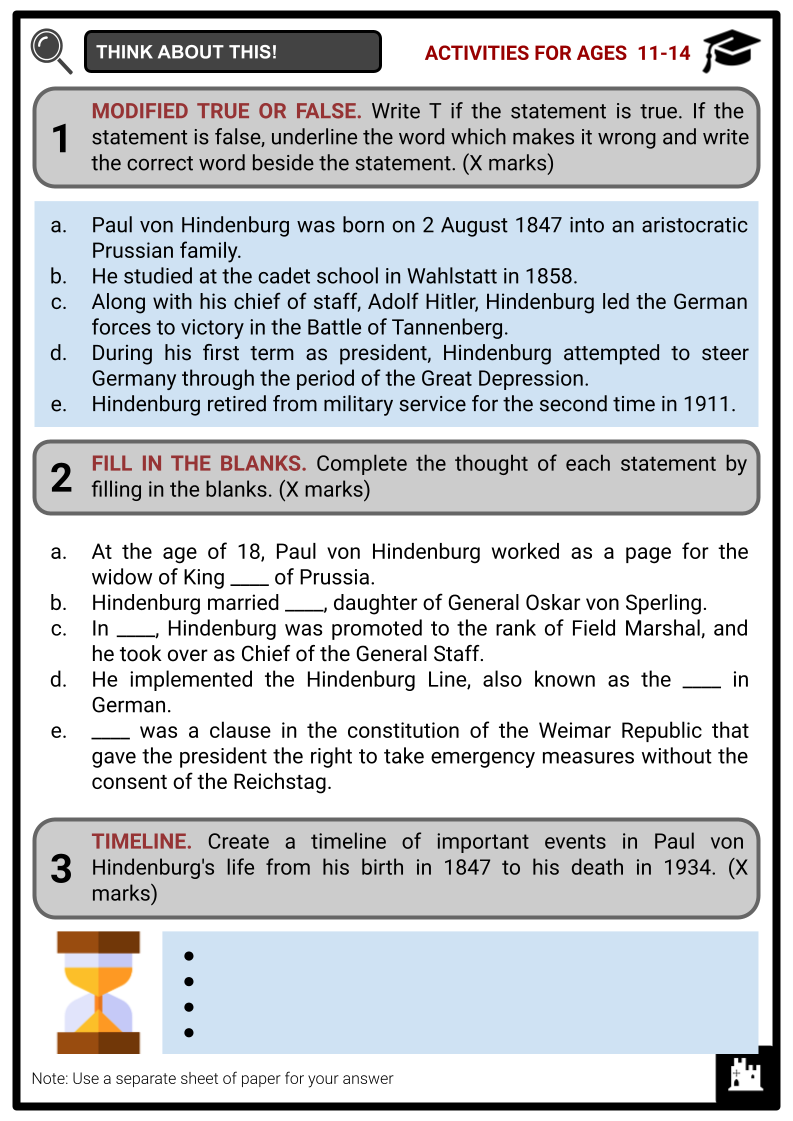
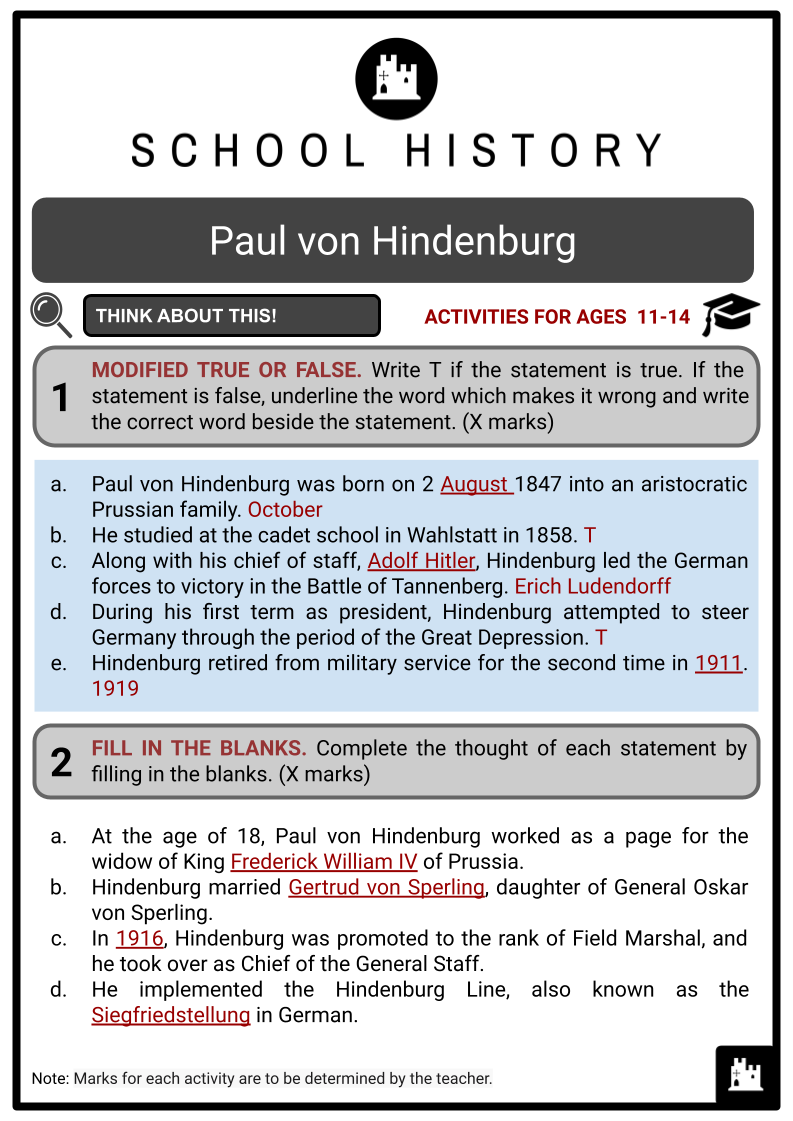
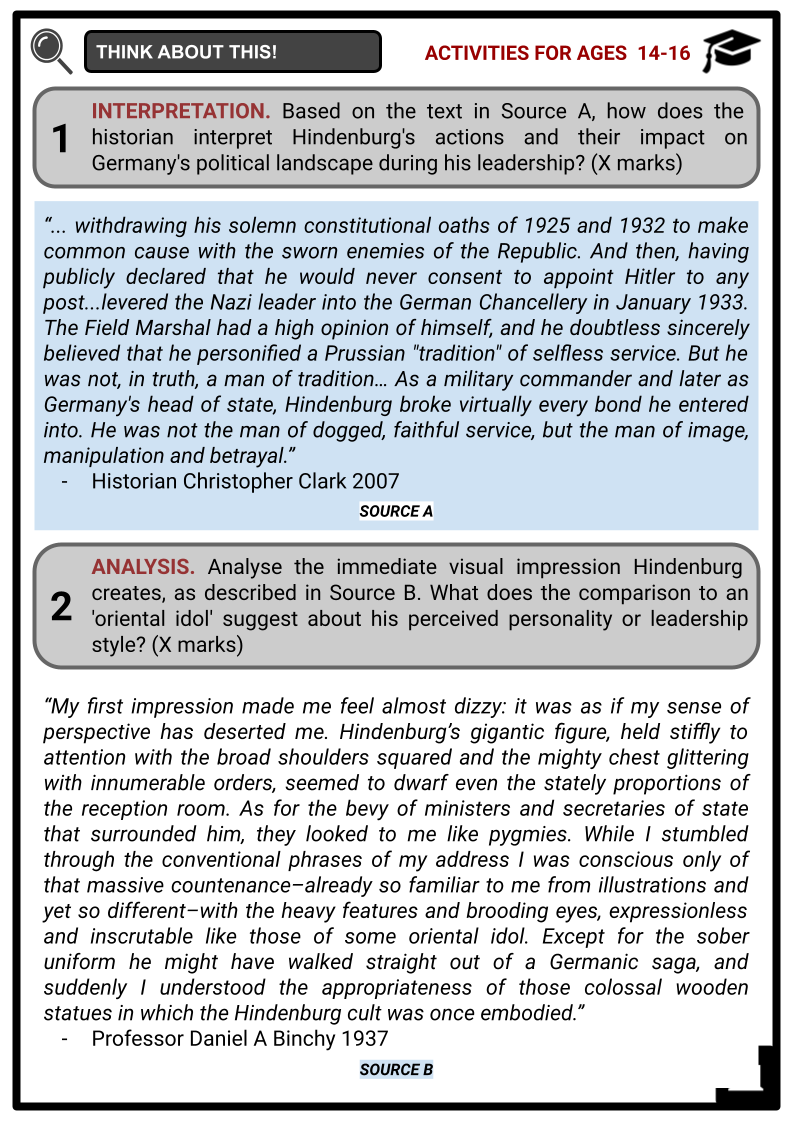
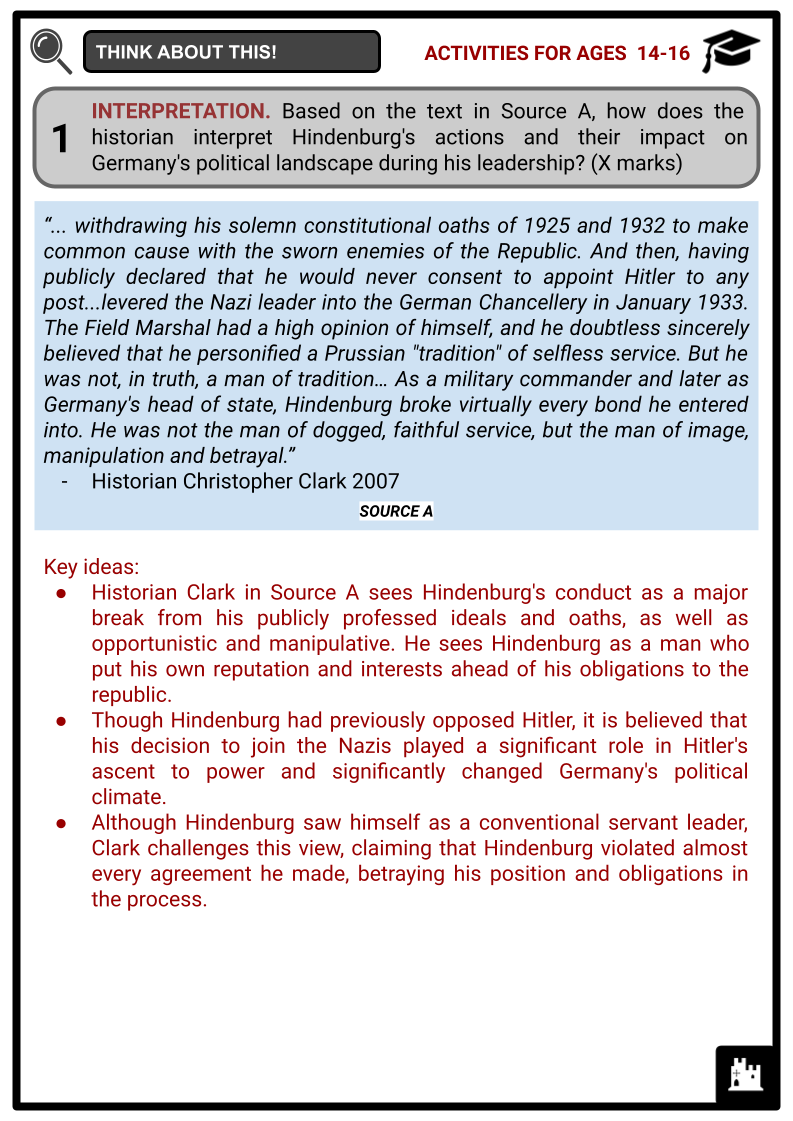
Summary
- Early Life and Education
- Military Career
- Political Journey
- Controversies and Criticisms
- Death and Legacy
Key Facts And Information
Let’s know more about Paul von Hindenburg!
Paul von Hindenburg was a German military officer and politician who served as the second President of Germany from 1925 until his death in 1934. Coming to prominence during the First World War as a decorated military leader, Hindenburg was revered as a national hero and subsequently elected for the presidency.
Throughout his presidency, he was tasked with navigating Germany through the period of the Great Depression. However, his presidency was controversial, notably due to his appointment of Adolf Hitler as Chancellor in 1933. This decision, along with his sanctioning of the Enabling Act, granted Hitler dictatorial powers and marked the onset of Nazi Germany. Hindenburg's legacy remains both a blend of his status as a national war hero and a critical player in Hitler's ascent to power.
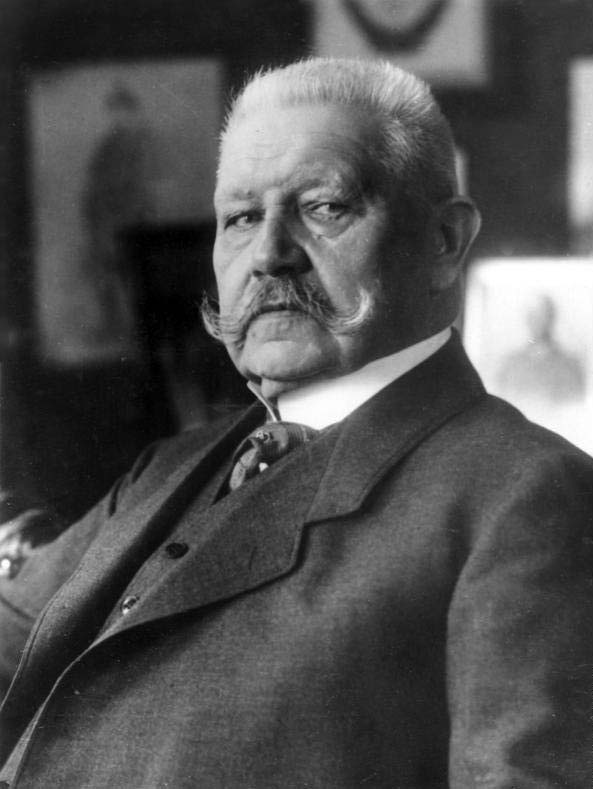
EARLY LIFE AND EDUCATION
- Paul von Hindenburg, formally known as Paul Ludwig Hans Anton von Beneckendorff und von Hindenburg, was born on 2 October 1847 into an aristocratic Prussian family with a strong military background. He was the son of Hans Robert Ludwig von Beneckendorff und von Hindenburg, a Prussian military commander from the ancient Junker class, and Luise Schwickart, the daughter of a doctor.
- Born in Posen in Prussia, present-day Poznań in Poland, Hindenburg grew up understanding the norms and expectations of Prussian society. The military tradition of serving the state was especially prominent during his upbringing.
- Hindenburg took great pride in his family lineage, which he could trace all the way back to 1289. In keeping with the family's customary practice, his father provided for his family by serving as an army officer. His father later retired with the rank of major.
- Hindenburg's education occurred largely within the military system. He studied at the cadet school in Wahlstatt (now Legnickie Pole, Poland) in 1858. He later attended another military academy in Berlin in 1863. These institutions were designed to groom young men into military professionals, and their curriculum was heavily centred on strict discipline, tactical training, command responsibility, and broad knowledge of the military sciences.
- At the age of 18, he worked as a page for the widow of King Frederick William IV of Prussia. Those who had graduated and were about to enter the military were presented before King William I, who inquired about the name and rank of their father. In the Third Regiment of Foot Guards, he rose through the ranks to become a second lieutenant. The upbringing and education of Hindenburg played a pivotal role in shaping his identity as a military strategist, political leader and highly significant person in German history.
MILITARY CAREER
- Hindenburg's military career started in the later part of the 19th century and continued into the first half of the 20th century. He first enlisted in the army in 1866, starting as a lieutenant in the Third Regiment of Foot Guards.
- His early military career saw him actively participating in the Austro-Prussian War, particularly the Battle of Königgrätz. Although there is little information about his specific contributions to this war, it is evident that it helped him hone his skills as a young military officer.
- Now a more mature soldier, Hindenburg again stood with the Prussian army in the Franco-Prussian War in 1870. He participated in various battles, including the key battle at Sedan, developing his tactical skills and gaining a deeper understanding of large-scale military campaigns. The real-world experience garnered from the war, which ended in a decisive German victory, added to Hindenburg's growing strategic prowess.
- In 1879, Hindenburg married Gertrud von Sperling, daughter of General Oskar von Sperling. The couple had three children: Irmengard, Annemarie and Oskar.
- After the wars, Hindenburg continued to rise through the ranks of the military, receiving promotions and accolades for his leadership abilities. In 1903, he was promoted to the rank of general and appointed commander of the 28th Division. Although in 1911, at the age of 64, he retired from active duty, this would not be permanent as the outbreak of the First World War in 1914 would draw him back into military service.
- Along with his chief of staff, Erich Ludendorff, Hindenburg led the German forces to victory in the Battle of Tannenberg. Hindenburg took advantage of Germany's robust railway network to rapidly move forces. The Russian Second Army, led by General Samsonov, was encircled and defeated first, with most of its troops taken prisoner or killed.
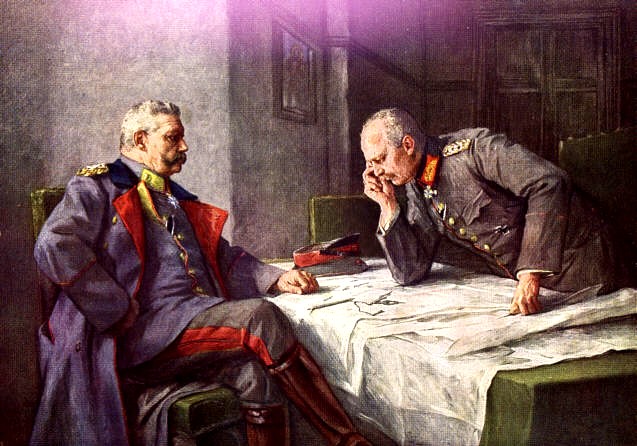
- A few days later, the subsequent Masurian Lakes battle led to the retreat of the Russian First Army. This spectacular victory at the Battle of Tannenberg cultivated a heroic image of Hindenburg, emphasising his leadership and strategic mind.
- In 1916, Hindenburg was promoted to the rank of Field Marshal, and he took over as Chief of the General Staff. He was jointly, along with Ludendorff, responsible for managing Germany's war effort during the remainder of the First World War, which proved to be a challenging time due to the blockade by the Allies and the unravelling political situation at home.
- Hindenburg oversaw a shift to a strategy of positional warfare in the West and implemented the Hindenburg Line, also known as the Siegfriedstellung in German. It was a comprehensive network of defensive fortifications constructed in the northeastern region of France during the First World War.
- The Line, which was named after Hindenburg, included wide trenches, fortified bunkers and intricate wire entanglements, improving its defensive infrastructure and enhancing its reputation as a formidable fortification in its time. The Line exerted a significant influence on the outcome of major battles throughout the years 1917 and 1918, and its eventual breach by Allied troops proved to be a pivotal element in precipitating the conclusion of the war.
- Though Germany ultimately lost the war, Hindenburg's management of the war, particularly the implementation of the Hindenburg Line, earned him significant recognition.
POLITICAL JOURNEY
- After the First World War, which resulted in German losses, Hindenburg retired from military service for the second time in 1919. He transitioned into politics, leveraging the reputation earned from his military service.
- The presidential election held in 1925 came about due to the sudden death of Friedrich Ebert, the first President of the Weimar Republic. Initially, Hindenburg was reluctant to pursue a career in politics. However, a coalition of conservative and nationalist groups who believed that his stature and popularity could bring stability to the fragile democratic government persuaded him to run for president. Hindenburg reluctantly agreed and launched his campaign, positioning himself as a symbol of stability and national pride.
- The first round of the election held in March 1925 did not yield a definitive result, as no candidate managed to get the required majority. In the second round of the election, Hindenburg won with a slender margin over his primary opponent, Wilhelm Marx of the Catholic Centre Party. Hindenburg secured the presidency at the age of 77, becoming the second President of the Weimar Republic.
- During his first term as president (1925–1922), Hindenburg attempted to steer Germany through the period of the Great Depression. His strategy focused on fiscal restraint and implemented measures to balance the budget, which often involved significant austerity measures. However, these policies proved to be unpopular among the German population, as they resulted in widespread unemployment and economic hardship.
- Hindenburg's second term (1932–1934), however, was marred by the rise of Adolf Hitler and the Nazi Party. Initially, Hindenburg resisted the Nazis, and he twice refused Hitler's demands to become Chancellor. But, by early 1933, under immense pressure from various political parties and advisers, Hindenburg eventually appointed Hitler as Chancellor.
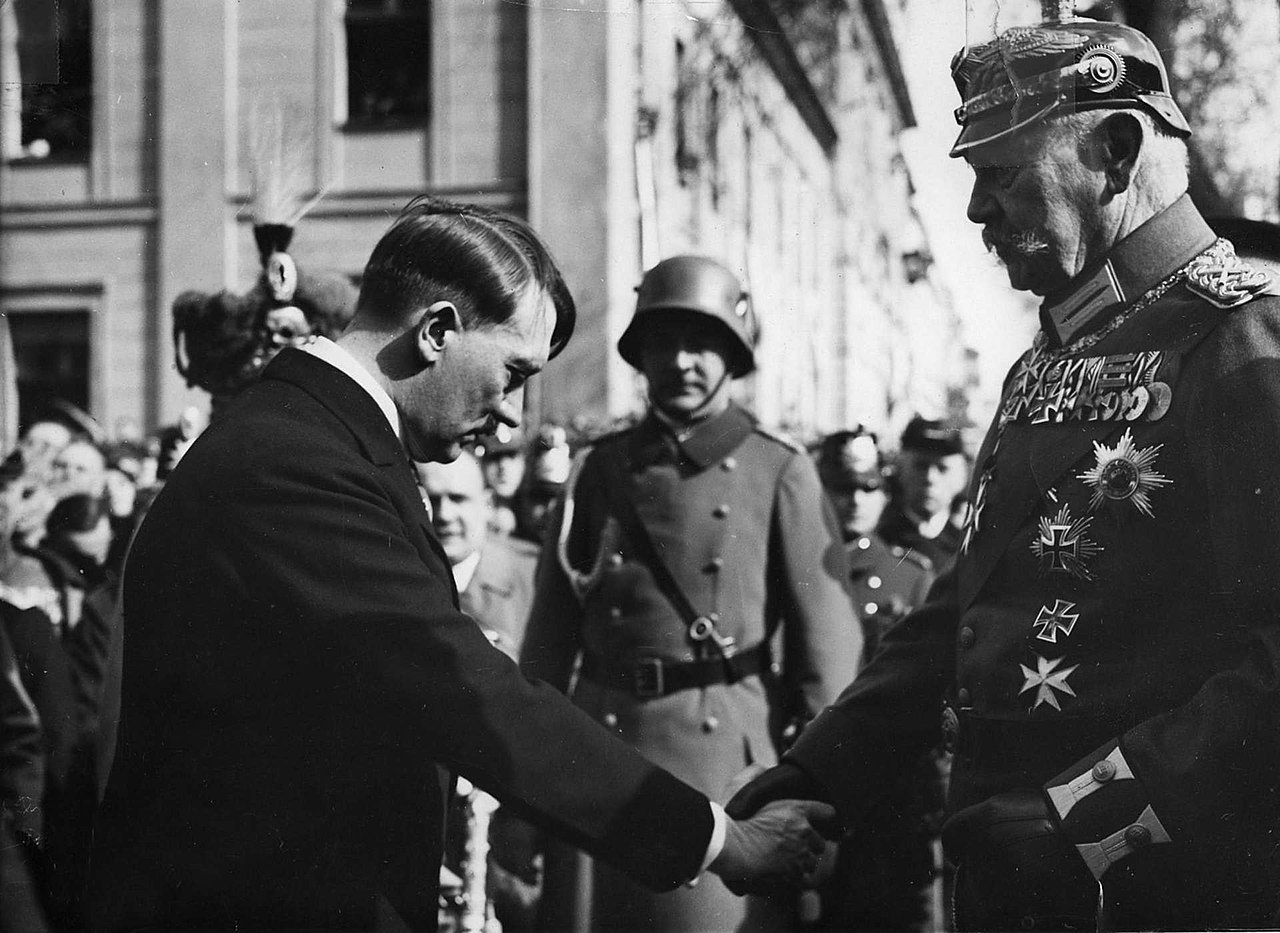
- This marked a significant turning point in Hindenburg's presidency and in German history. Unaware of the extent of the terror the Nazis would unleash, Hindenburg signed the Enabling Act in 1933, which granted Hitler almost absolute power. While Hindenburg's legacy as a war hero remains, his role in Hitler's ascent to power has been a topic of considerable historical debate.
CONTROVERSIES AND CRITICISMS
- There were many controversies during Hindenburg's presidency of the Weimar Republic, with one of them being his reliance on Article 48, which weakened democratic institutions and processes and contributed to the Republic's demise.
- Article 48 was a clause in the constitution of the Weimar Republic that gave the president the right to take emergency measures without the consent of the Reichstag (the German Parliament). The use of this article allowed Hindenburg to suspend fundamental rights and freedom of expression during times of crisis and violence.
- Many critics contend that the frequent reliance on Article 48 weakened the Weimar Republic's democratic principles. Over time, Hindenburg progressively interpreted the Article's provision for dealing with emergency situations more broadly, using it to navigate through political gridlocks and to make important decisions unilaterally. While this allowed for decisive governance during times of crisis, the continuous use of Article 48 stirred resentment among the Reichstag members. The concern was not merely about the usurpation of legislative power but also about how this could facilitate the emergence of a dictatorship.
- Hindenburg's appointment of Adolf Hitler as Chancellor in 1933 also faced significant criticism. Initially, he showed open disdain for Hitler and the Nazi Party. He dismissed Hitler as a 'Bohemian corporal' and thought little of his political repertoire.
- However, as the political landscape of Germany shifted amid the Great Depression, Hitler's popularity soared. His charismatic appeal and promises of national rejuvenation resonated with a disgruntled German populace, while the republic's democratic leaders struggled for solutions amid the economic crisis.
- Despite his misgivings about Hitler, Hindenburg came under intense pressure from various political parties, advisers and influential personalities to appoint Hitler as Chancellor. They believed that the Nazis could be controlled from within the government and that they could ride on Hitler's popularity to stabilise the nation.
- Reluctantly, Hindenburg conceded and appointed Hitler as Chancellor on 30 January 1933. It was a move that would catalyse the end of the Weimar Republic and the rise of the Nazi regime. Later that year, Hindenburg signed the Enabling Act, which effectively gave Hitler dictatorial powers, marking the end of democracy in Germany. Many historians argue that Hindenburg underestimated Hitler's ambition and the true nature of the Nazi Party, leading to one of the most catastrophic chapters of human history.
- These controversial elements of Hindenburg's political career serve as a stark reminder of the complexities and contradictions inherent in his presidency, and his role in facilitating the rise of the Nazi regime has been a major discussion point in historical discourse.
DEATH AND LEGACY
- Paul von Hindenburg died on 2 August 1934, in Neudeck, East Prussia, due to lung cancer, at the age of 86. With his passing, Hitler declared himself Führer, solidifying his totalitarian rule over Germany. Hitler used Hindenburg's death to further enhance his image and consolidate power. Hindenburg's state funeral was used as a propaganda tool with a grand military procession in Tannenberg.
- Hindenburg was buried at a grand state funeral organised by the Third Reich. The funeral took place in Tannenberg due to its significance in his military career: he had gained national recognition for winning the Battle of Tannenberg against the Russian army in the First World War.
- Hindenburg's legacy as a military leader during the First World War successfully led Germany through some of the most challenging stages of the conflict. His reputation as a war hero brought him into the public eye and led to his presidency.
- As the President of the Weimar Republic, he helped steer Germany through periods of significant economic hardship, particularly during the Great Depression. His commitment to fiscal restraint and budget balancing, although controversial, demonstrated a commitment to economic stability.
- However, his decision to appoint Hitler as Chancellor, along with his signing of the Enabling Act, which bestowed Hitler with dictatorial powers, cast a long and dark shadow over his legacy. Despite being a decorated war hero, Hindenburg's political career carries heavy controversy, given his role in Hitler's ascent to power. Ultimately, his political decisions led to the rise of Nazi Germany and the horrors that ensued.
Image Sources
- https://upload.wikimedia.org/wikipedia/commons/1/1b/Bundesarchiv_Bild_183-C06886%2C_Paul_v._Hindenburg.jpg
- https://upload.wikimedia.org/wikipedia/commons/c/c0/Hindenburg-ludendorff.jpg
- https://upload.wikimedia.org/wikipedia/commons/thumb/b/b7/Bundesarchiv_Bild_183-S38324%2C_Tag_von_Potsdam%2C_Adolf_Hitler%2C_Paul_v._Hindenburg.jpg/1280px-Bundesarchiv_Bild_183-S38324%2C_Tag_von_Potsdam%2C_Adolf_Hitler%2C_Paul_v._Hindenburg.jpg
Frequently Asked Questions
- Who was Paul von Hindenburg?
Paul von Hindenburg was a German military officer and politician. He served as the second President of the Weimar Republic and played a significant role during World War I.
- What is the significance of the Hindenburg Line in World War I?
The Hindenburg Line, named after Paul von Hindenburg, was a heavily fortified German defensive position on the Western Front during World War I, which played a crucial role in the German Army's strategy.
- How did Paul von Hindenburg impact German politics?
Hindenburg's presidency marked a critical period in German history. He appointed Adolf Hitler as Chancellor in 1933, contributing to the eventual rise of the Nazi regime.
